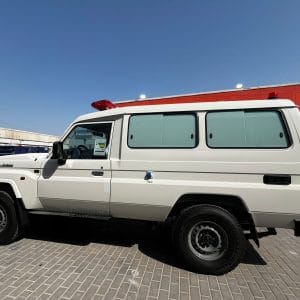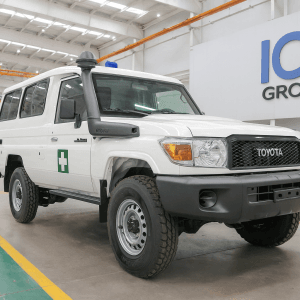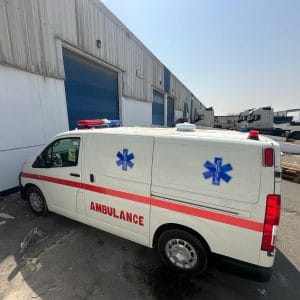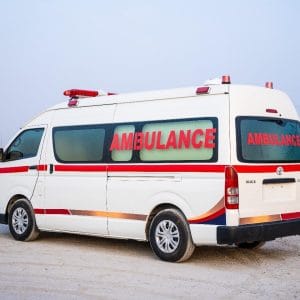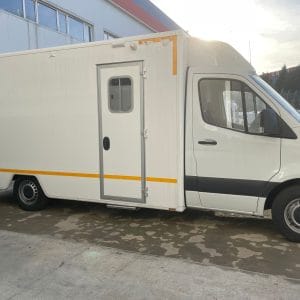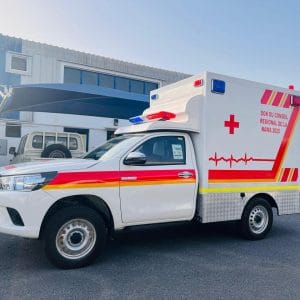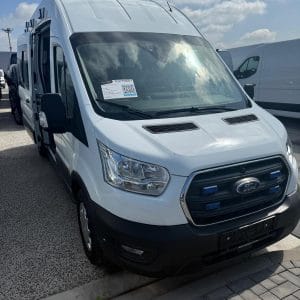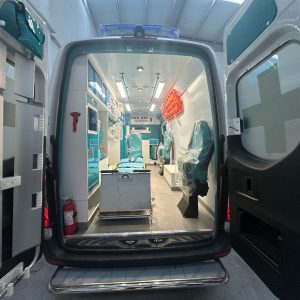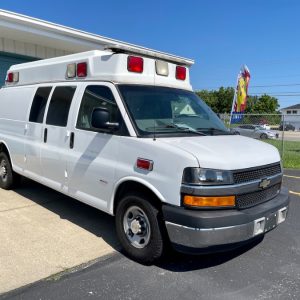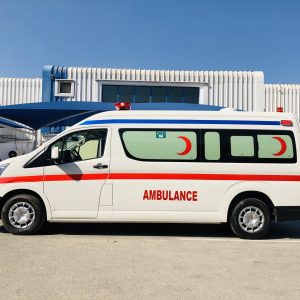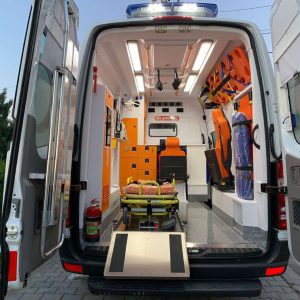Tajikistan’s Land Cruiser Had-Top Ambulance, Forged in Dubai’s Jebel Ali; In the high-stakes world of emergency medical services (EMS), the vehicle is not just transport; it is the first link in the chain of survival. Nowhere is this truer than in the demanding, rugged landscapes of a country like Tajikistan, where mountain passes challenge even the most robust machines and remote communities lie far from advanced medical care. To meet this critical need, a specialized project was conceived, one that would merge legendary automotive durability with state-of-the-art medical technology.
The keyword “Tajikistan için land cruiser had top ambulance” (Land Cruiser Had-Top Ambulance for Tajikistan) tells a compelling story of international collaboration and engineering excellence. This story reached its pivotal chapter not in Tajikistan or Japan, but within the dynamic industrial hub of the Jebel Ali Free Zone (JAFZA) in Dubai, at the factory of Infinity Chassis Units.
This is the detailed account of how a global vision for enhanced healthcare mobility was brought to life.
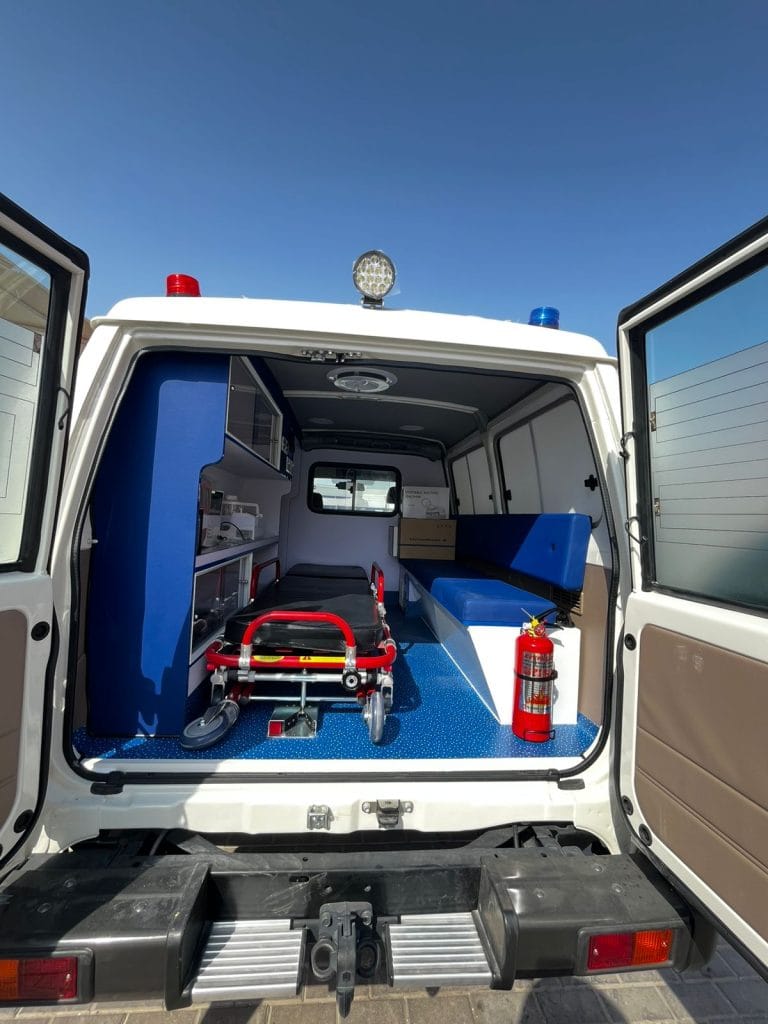
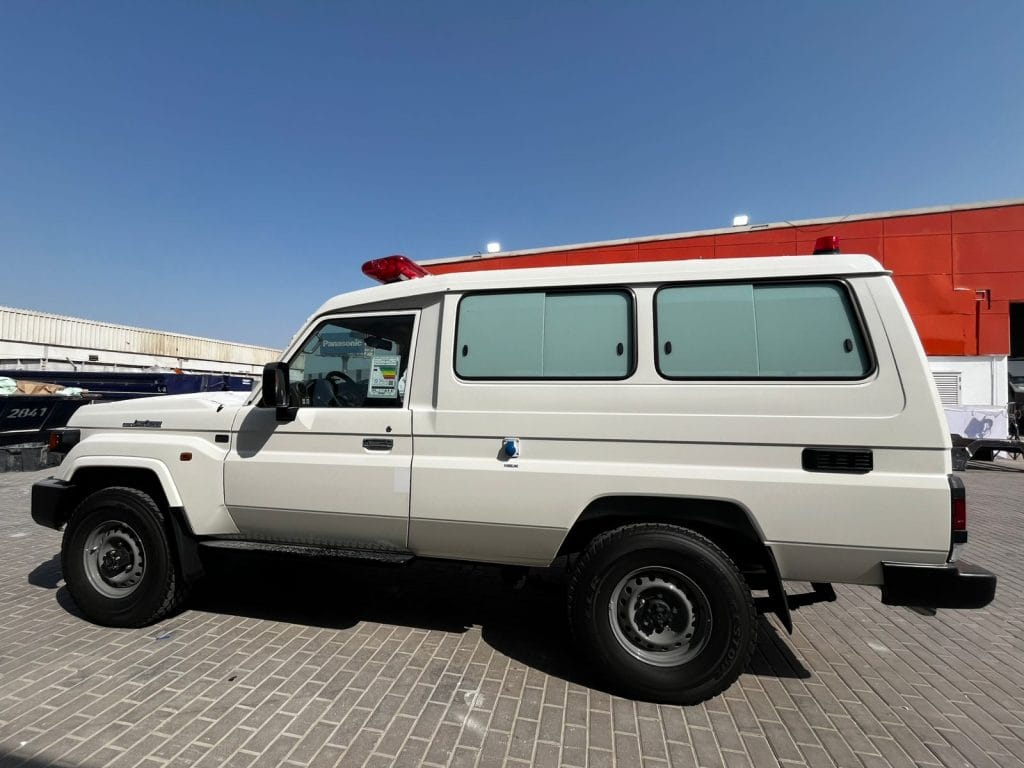
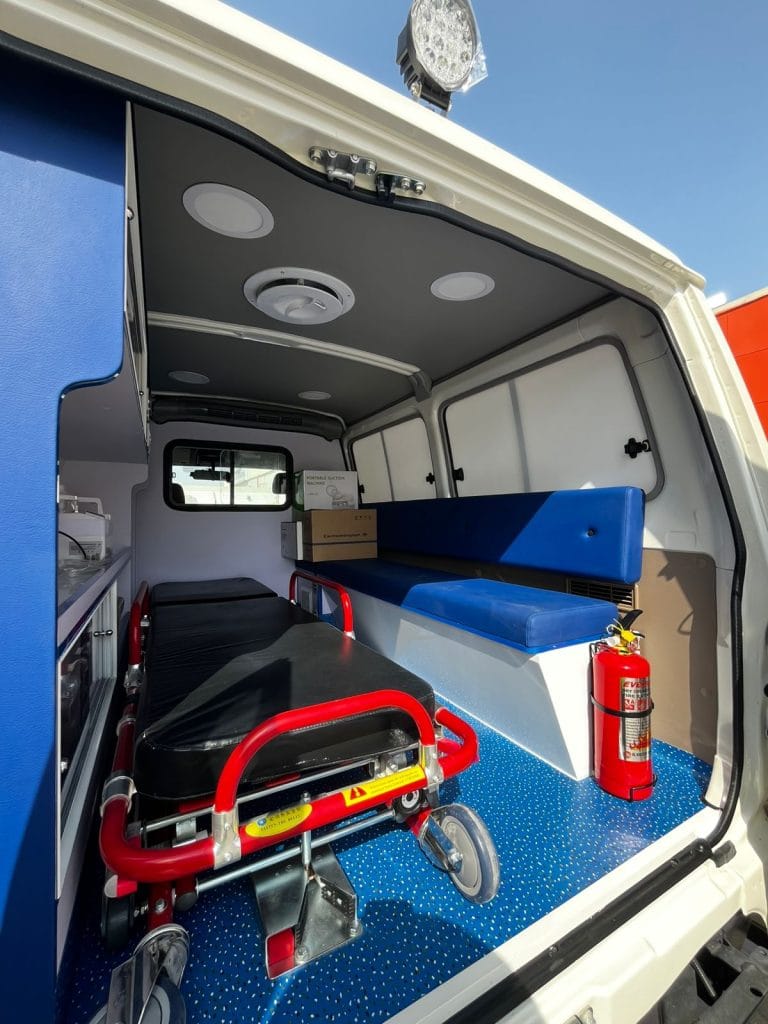

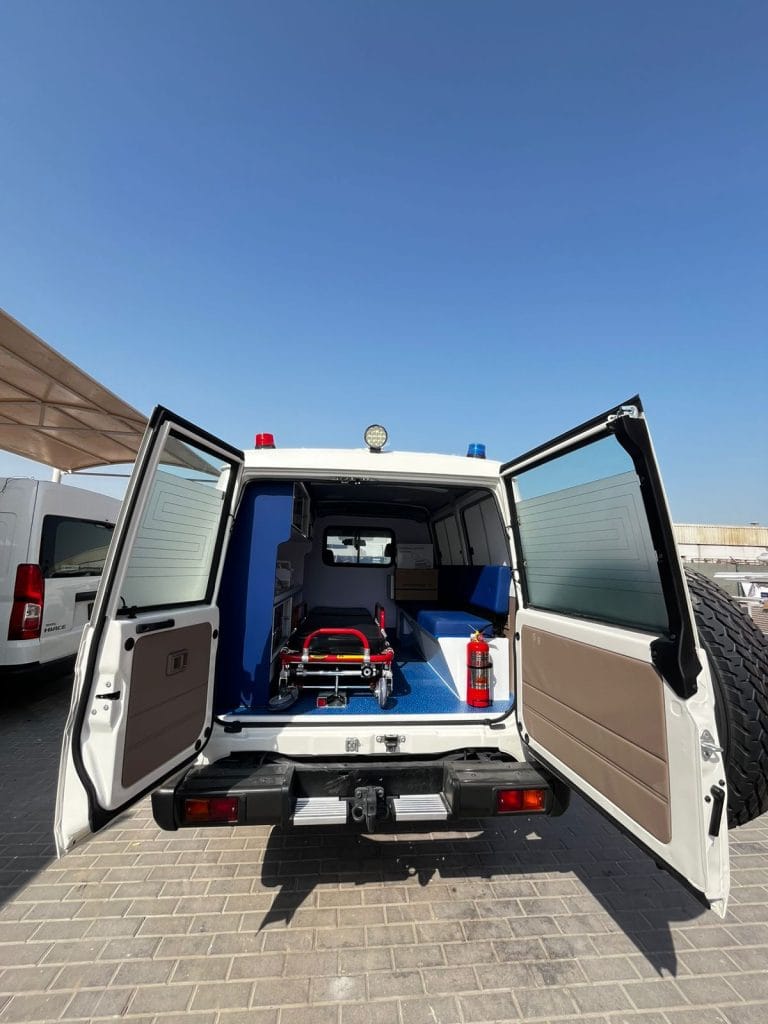

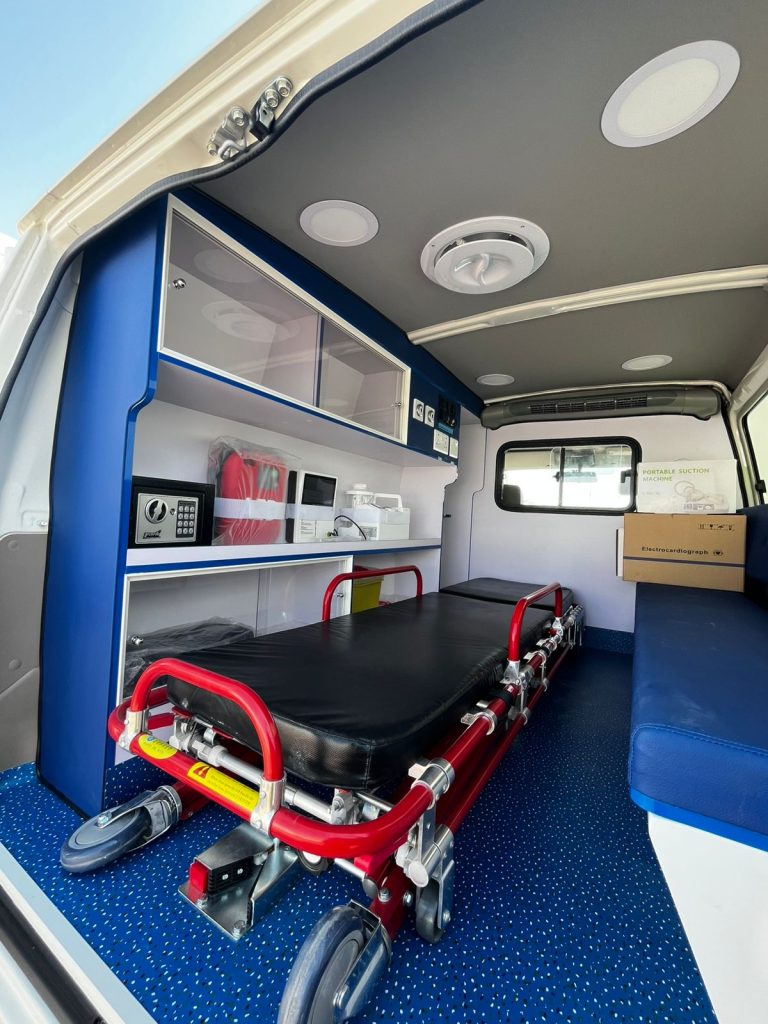
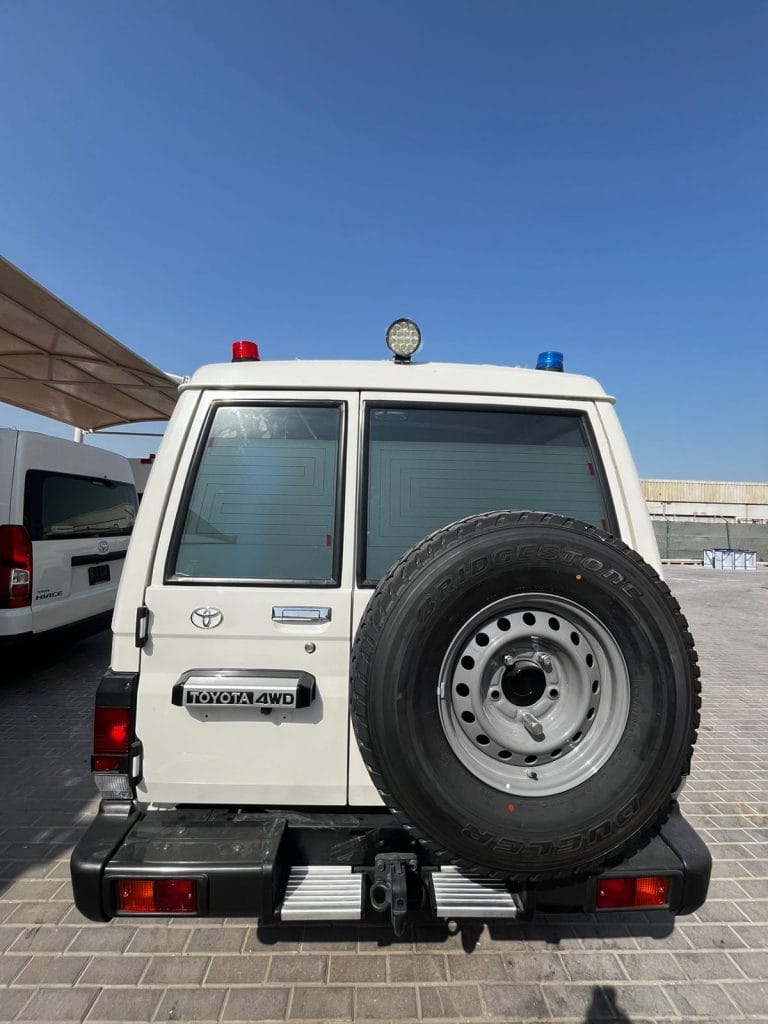

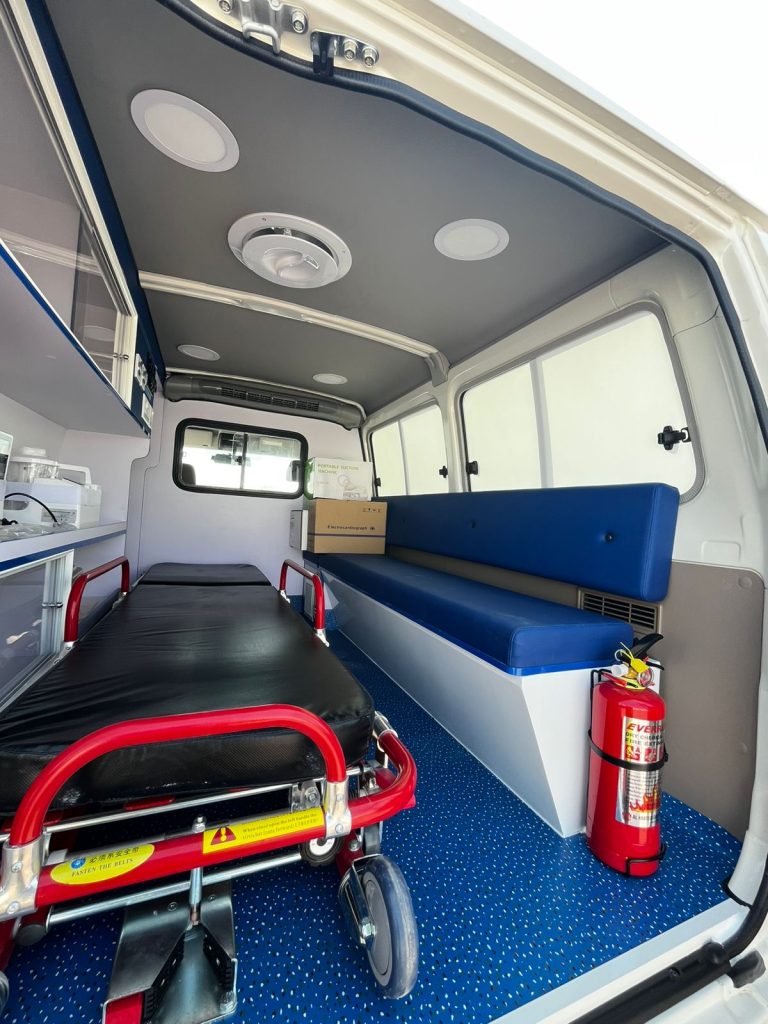
The Challenge: Why Tajikistan Needs a Special Kind of Ambulance
To understand the “why” behind this specific vehicle, one must first understand the geography of Tajikistan. Over 90% of the country is mountainous, with the Pamir and Alay ranges dominating the landscape. Roads are often unpaved, treacherous, and susceptible to closures due to snow, ice, and landslides. For a standard, city-built ambulance, these conditions are not just challenging; they are impassable.
The requirements for an effective Tajikistan ambulance are unique:
- Unmatched Off-Road Capability: The vehicle must confidently traverse rocky trails, ford shallow rivers, and climb steep, uneven inclines.
- Extreme Reliability: Breakdowns are not an option when a patient’s life is on the line in a remote area. The vehicle must be mechanically simple, robust, and easy to repair with available parts.
- All-Weather Performance: It must operate flawlessly in the scorching summer heat of the lowlands and the sub-zero temperatures of the high-altitude regions.
- Compact Size and Maneuverability: Narrow mountain paths and village streets preclude the use of large, box-style ambulances.
This specific set of demands points to one, and only one, platform as the ideal starting point: the Toyota Land Cruiser.
The Chassis: The Toyota Land Cruiser – An Icon of Indestructibility
The Toyota Land Cruiser is more than a vehicle in regions like Central Asia; it is an institution. Renowned for its relentless reliability and formidable off-road prowess, the Land Cruiser has earned a near-mythical status. Its body-on-frame construction, powerful engine, and advanced 4×4 systems make it the perfect foundation upon which to build a life-saving machine for the world’s toughest terrains.
Choosing the Land Cruiser as a base is a strategic decision rooted in practicality. Its widespread use means local mechanics are familiar with its workings, and a supply chain for spare parts already exists. This ensures the long-term serviceability of the ambulance, a critical factor often overlooked in humanitarian and government vehicle procurements.
The project, therefore, was clear: take this unparalleled chassis and transform it into a fully functional, “Had-Top” ambulance.
The “Had-Top” Ambulance: More Than Just a Conversion
The term “Had-Top” refers to a specific type of ambulance body construction. Unlike a simple van conversion, a Had-Top body is a modular, high-roof module that is professionally engineered and built separately before being integrated onto the vehicle’s chassis. This method offers significant advantages:
- Structural Integrity: The module is built as a single, rigid unit, designed to withstand the stresses of off-road travel without compromising its structure or the medical equipment inside.
- Optimized Interior Space: The raised roof provides crucial standing room for paramedics to work on a patient during transit, a vital feature for advanced life support (ALS) procedures.
- Customization: The interior can be meticulously planned and fitted to specific medical protocols, with dedicated mounting for devices, optimized storage, and efficient workflow.
- Durability: Made from reinforced materials like fiberglass or composite panels, the Had-Top body is built to last, resisting corrosion and wear.
The marriage of the Land Cruiser’s drivetrain with a purpose-built Had-Top body creates the ultimate off-road emergency response unit.
The Artisan: Infinity Chassis Units and the Jebel Ali Advantage
The execution of this vision required a specialist—a company with the technical expertise, manufacturing excellence, and global logistics capability to deliver. This is where Infinity Chassis Units, based in the Jebel Ali Free Zone, entered the picture.
Why Jebel Ali Free Zone (JAFZA)?
JAFZA is one of the world’s leading free trade zones, a nexus of global commerce and industry. Its strategic location offers unparalleled advantages for a project like this:
- Global Sourcing: Infinity can easily import Toyota Land Cruiser chassis directly from manufacturers and high-quality medical components from Europe and the US, all with streamlined customs procedures.
- Logistical Hub: Jebel Ali Port is one of the busiest in the world. Finished vehicles can be efficiently shipped anywhere, including to the landlocked ports of Iran or Pakistan for overland transport to Tajikistan.
- High-Tech Infrastructure: JAFZA provides a world-class environment for manufacturing, with reliable utilities and a business-friendly ecosystem.
The Manufacturing Process at Infinity Chassis Units
The transformation of a standard Land Cruiser into a “Had-Top” ambulance at Infinity’s factory is a symphony of precision engineering. The process can be broken down into key stages:
- Chassis Preparation: Upon arrival, the brand-new Land Cruiser chassis is inspected and prepared. This involves reinforcing the frame in specific areas to handle the weight and dynamic loads of the new body.
- Body Fabrication: In parallel, the Had-Top module is constructed. Using jigs and advanced materials, craftsmen build the shell, integrating structural supports, insulation, and pre-cut openings for windows, doors, and ventilation.
- Marriage of Chassis and Body: This is the critical moment. The completed Had-Top module is carefully lowered and bolted onto the prepared Land Cruiser chassis. The connection is not just physical; all electrical and climate control systems must be seamlessly integrated.
- Medical Interior Fit-Out: The empty module is transformed into a mobile clinic. This includes:
- Installation of Cabinetry: Lightweight, yet strong aluminum or composite cabinets are installed to store medical supplies, medications, and ALS equipment.
- Electrical Systems: A dual electrical system is installed. This includes the vehicle’s standard system and a separate, powerful inverter and battery bank to run sensitive medical equipment like ventilators and defibrillators without draining the engine battery.
- Patient Compartment: The installation of the main ambulance cot, a foldable attendant seat, oxygen system manifolds, interior lighting (including mood lighting for patient comfort), and communication systems.
- Exterior Finishing: The vehicle is painted in high-visibility colors (typically white with reflective Battenburg patterns or striking red and yellow), and emergency warning lights and sirens are installed.
- Quality Control and Testing: Every finished ambulance undergoes a rigorous testing protocol. This includes off-road testing to ensure the body-chassis union can handle vibrations and shocks, electrical load testing, and a complete check of all medical systems.
The Science of a Had-Top Ambulance Conversion
The conversion from a utility vehicle to a medical emergency unit is a deep engineering discipline. It involves critical considerations that Infinity Chassis Units expertly addresses:
- Center of Gravity: Adding a high roof raises the vehicle’s center of gravity. Infinity engineers compensate for this by using lightweight materials and strategically placing heavy equipment low in the module, ensuring the vehicle remains stable on off-camber trails.
- Climate Control: The cabin must be a controlled environment. A powerful secondary air conditioning and heating system is installed to maintain a safe temperature for both patients and paramedics, whether in a +45°C desert or a -20°C mountain valley.
- Infection Control: Surfaces are designed for easy decontamination. Non-porous, wipe-clean materials are used on all work surfaces and walls to prevent the spread of pathogens.
The Impact: Delivering Hope to Tajikistan
The arrival of these Land Cruiser Had-Top ambulances in Tajikistan represents a significant upgrade to the country’s emergency medical infrastructure. Their deployment can be envisioned in several critical scenarios:
- District Hospital Response: Serving as the primary ALS unit for a regional hospital, covering a vast and rugged catchment area.
- Mountain Rescue: Specifically equipped for high-altitude rescue, working in coordination with emergency services to reach stranded climbers or remote villagers.
- Inter-Facility Transfer: Safely transporting critical patients from a remote health post to a better-equipped central hospital, often on journeys lasting several hours.
For the people of Tajikistan, these vehicles are more than machines; they are a promise. A promise that no matter how remote their home, professional medical help has a fighting chance of reaching them in their most vulnerable moment.
A Model for the Future
The successful completion of the “Tajikistan için land cruiser had top ambulance” project by Infinity Chassis Units establishes a powerful blueprint. It demonstrates how the specific needs of a challenging region can be met through a global supply chain, expert manufacturing, and a deep understanding of both automotive and medical engineering.
This model is replicable for other countries with similar rugged terrains—Afghanistan, Nepal, parts of Africa, and South America. The combination of the Toyota Land Cruiser’s proven platform and the specialized, Had-Top conversion expertise found in hubs like Dubai’s Jebel Ali Free Zone provides a reliable, high-quality solution for enhancing global health security.
Conclusion
The journey of a Tajikistan-bound Land Cruiser ambulance, from a raw chassis to a life-saving beacon, is a testament to human ingenuity and international cooperation. It begins with the recognition of a critical need in the mountains of Central Asia and finds its solution in the industrial heart of Dubai.
The keyword is not just a search term; it is a capsule containing a story of resilience, precision, and hope. It signifies a vehicle born from the legendary reliability of Toyota, sculpted into a mobile medical unit by the skilled hands at Infinity Chassis Units, and destined to serve as a guardian angel on the treacherous, beautiful roads of Tajikistan. In the end, this project is a powerful reminder that sometimes, the most advanced solutions are those engineered to conquer the most fundamental challenges.


